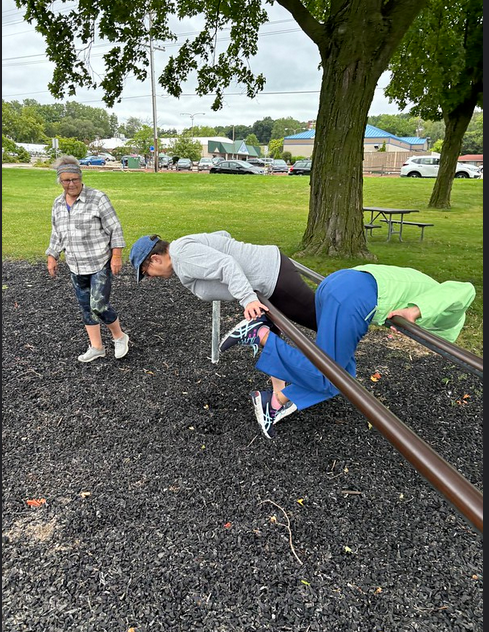Intergenerational Programs vs. Age-Specific Classes: What Works, When, and Why?
- Erin Eleu
- Jun 30
- 3 min read

At 77, one of Laura Dow’s respondents to the physical activity survey shared her weekly routine: two tap classes, one yoga class, and two long gym workouts. Her tap and yoga classes are designated for “seniors,” while her gym classes are mixed-age. She shared her perspective on taking an age-based class and an intergenterational class and raises a compelling question for us as physical activity leaders:
When do intergenerational classes work, and when is it more effective to create age-specific spaces?
Her reflection on her mixed-age gym classes:
“I find that working out with younger women is not as satisfying emotionally as working out with women closer to my own age. The conversation tends to focus on husbands, children, and family issues, things I’m no longer part of.”
She went on to write:
“I don’t find ‘senior’ to be a pejorative word. I’m actually suspicious of people who want to erase the idea of being a senior. My 70s are VERY different from my 50s or 60s—my energy, flexibility, and stamina have changed. I believe there are real advantages to classes designed for seniors, and I don’t think that’s ageist.”
She also noted the importance of instruction tailored to her age group, especially in her tap class:
“My tap teacher has a PhD in Dance Therapy and Dance Education, and she has done a lot of research on how dance can help seniors improve brain plasticity. Many aspects of tap, rhythm, patterning, sequencing, cross-body movements are very helpful in keeping our brains healthy. My teacher (who is herself in her late 60s) emphasizes this in class and choreographs our dances to challenge our brains. So, it is very important to me that I am in a senior class to get the benefit of her expertise and knowledge!”
This speaks to something we don’t always talk about in our aim to be inclusive: the importance of shared life experience and knowledgeable instruction. Whether you’re raising small kids or entering retirement, being in a class with peers who are in the same season of life can feel more supportive and emotionally satisfying and can ensure programming is appropriate for participants.
At the same time, there are successful intergenerational programs like ParkPlay in the UK, which invites people of all ages to come together for games, movement, and fun in public parks. These programs can thrive because they emphasize play, not performance; community, not comparison.
Where’s the balance?
I recently took a ninja class where the coach combined teens and adults. The teens (all male between 14-16 years old) flew through the obstacle course, while I moved with much more caution. I wondered, how do they feel sharing the space with people their parents' age? The energy, risk taking, and physical capacity differences made it feel more awkward than inclusive. Cheryl Whitelaw, had similar experience attending a mixed-age parkour class. Some combinations just don’t foster connection or belonging, and that’s worth paying attention to.
I’d love to hear your thoughts. Have you been part of an intergenerational class that worked well, or didn’t? What made the difference?
I'm opening up the conversation in our LinkedIn group. You can also email me your thoughts to erin@seconactfitpros.com.




Comments